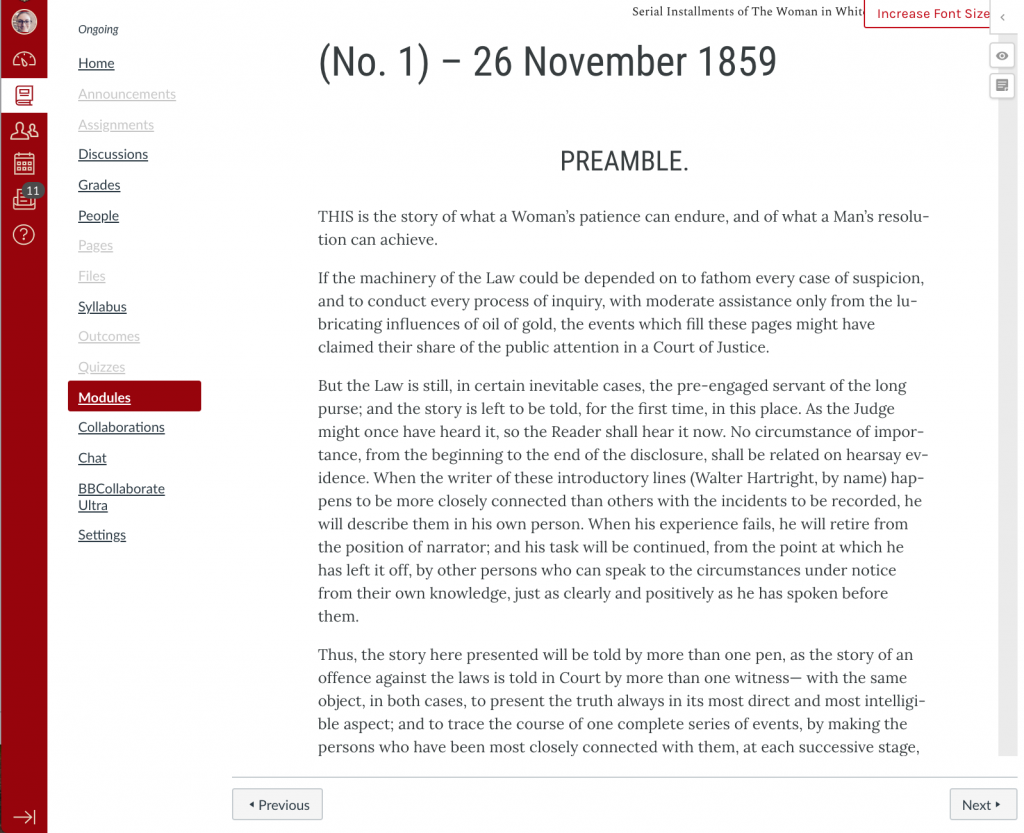Teaching With This Text: The Technical Details
For Instructors: Sharing and Embedding This Project
Sharing PDF and E-Text Files With Students
If you would like your students to have access to the primary source content and activity prompt resources in this text for free, you can direct them to the front page of this web project. There, they will be able to download the novel as a print or digital PDF, an Epub file (which opens in iBooks, Nook, Kobo e-reader, and many smartphones), a MOBI file (Kindle) and more.
You can also download these files and re-host them in your own Learning Management System (Canvas, Moodle, Blackboard, etc.) page for the class.
Canvas Import / Embed
UW-Madison instructors and campuses with an Edu affiliation with Pressbooks can also download a “Common Cartridge” file containing all of the web sections of the book, and when they upload that file to Canvas, their modules page will be immediately populated with the different readings from this text. From there, instructors can rearrange the readings into their own course modules and delete the readings they don’t want to assign. (This doesn’t affect the original text.)
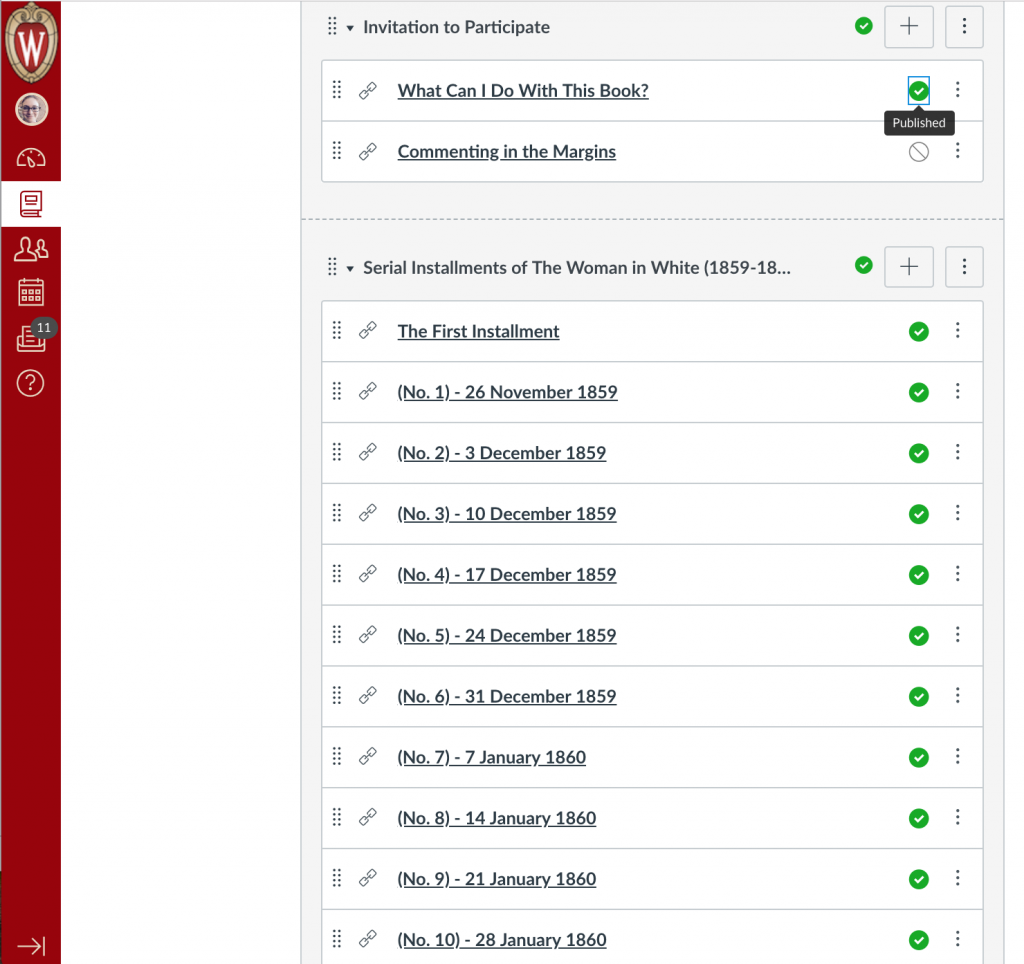
Content embedded in this way is hosted within Pressbooks rather than Canvas. What this means is that if the person who created the Pressbook added a new footnote to a chapter, that footnote would immediately appear in all of the Canvas pages that had embedded that particular part of the text. Likewise, if a student publishes a public Hypothesis annotation in any version of the text using the Canvas interface, these comments will immediately become visible in the web and all Canvas versions of that text. (See below for more information about interactive options.)
Why Multiple Modes of Access Matter
If an essay is accessible on the web, as an Ebook export, or even as a private, embedded Canvas text, students have a wider range of options for engaging with that text, including using a range of accessibility functions that are not available in simple PDF downloads or proprietary publisher platforms.
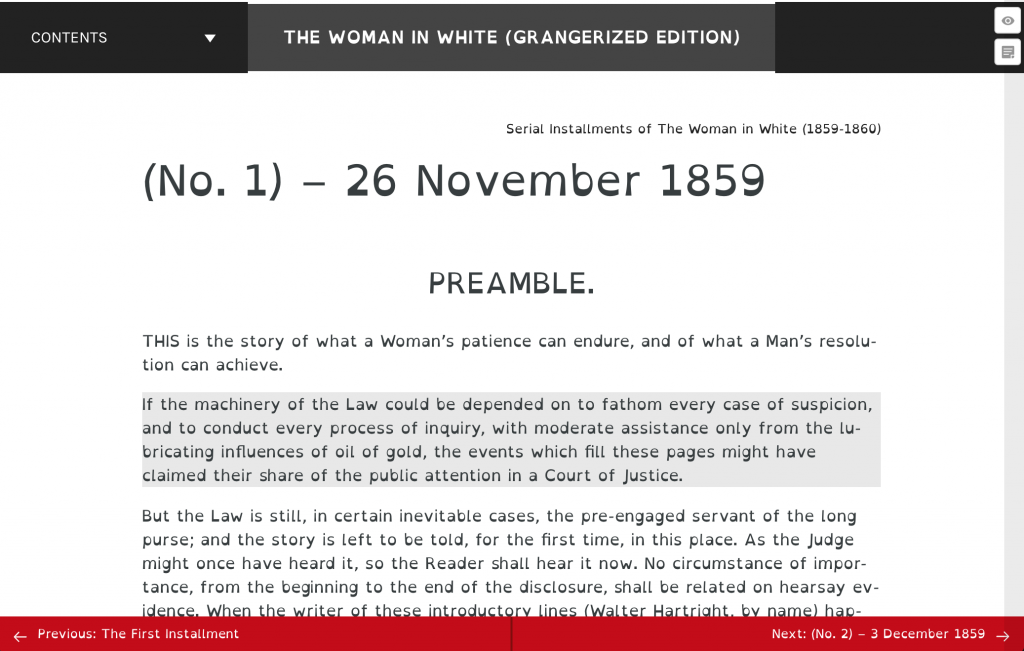
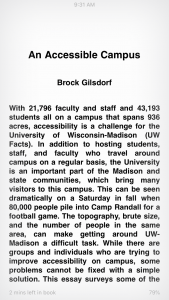 |
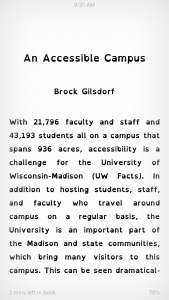 |
Interactive Affordances
In the web text version of this text, there are some marginal discussion options that instructors could implement or expand on their own.
Course-Section-Specific Student Discussion Layers
Students are invited and encouraged to take part in the public Hypothes.is discussion layer attached to this text.
It is also possible for instructors to set up private discussion layers for students to use in the margins of this text using the Hypothes.is plugin. This can allow instructors and students to create more self-contained communities of practice within the text or to include specific discussion prompts of their own.
Professor John Zumbrunnen of the UW-Madison Political Science Department uses this discussion option in his classes:
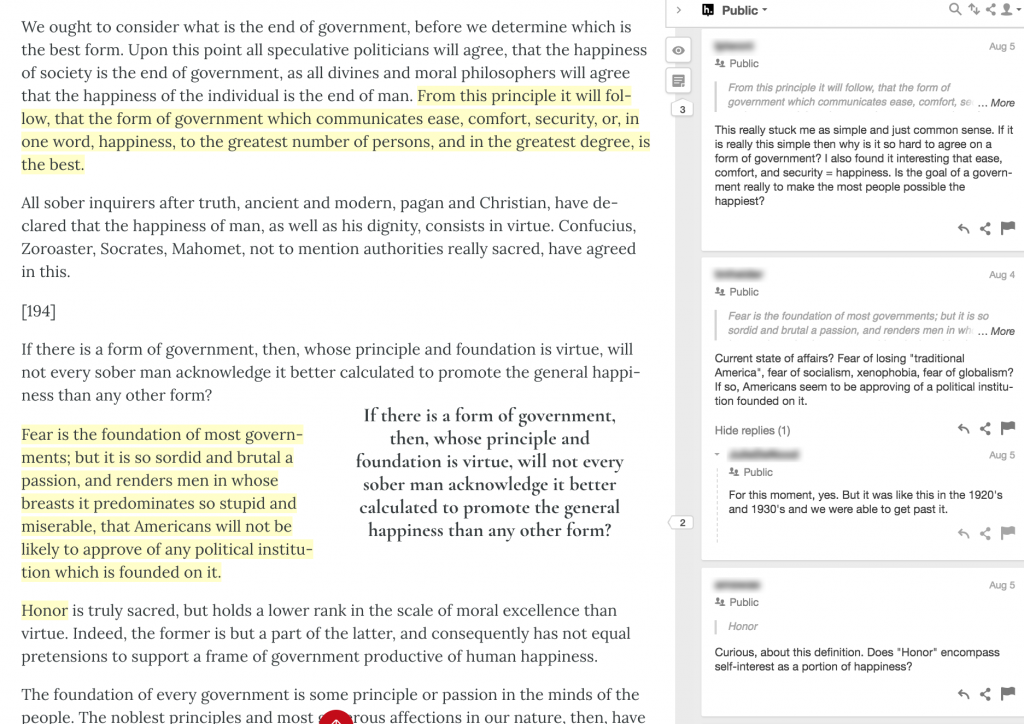
Instructors can also teach students how to use the annotation layer to hold their own notes and highlights within the text in a layer that is private to them alone.
You can find more information about teaching applications for the Hypothes.is annotation plugin here.

